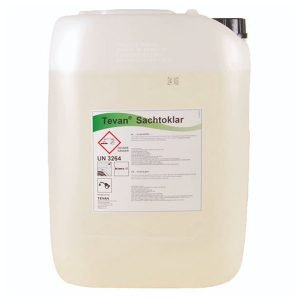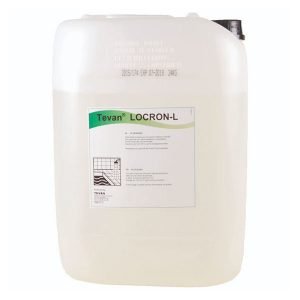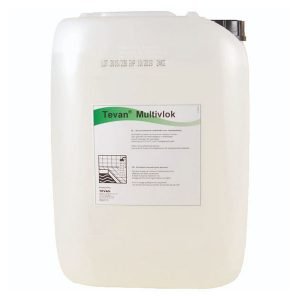Shop and pay safely online
Large stock
Certified products
Professional advice
Swimming pool cleaning
Hygienic cleaning of swimming water
There are more and more swimming pools. Swimming water is used for both sports (water polo, aqua aerobics) and recreational purposes (free swimming, sauna baths). Swimming pools often differ greatly in size, purpose, number of visitors and temperature. Cleaning of the swimming water therefore differs per pool. Read more about how to keep your pool as clean as possible below.
Contaminants in swimming pool water
Swimmers introduce various pollutants into the water when they go for a swim. Think for example of hair, cosmetics, but also sweat, skin tissues and saliva. Because there is water circulation during pool cleaning, these microorganisms and unwanted contaminants can increase. Harmful microorganisms such as bacteria and viruses multiply, increasing the chance that swimmers will contract illness.
Impurities dissolved in water
In addition to unwanted substances and micro-organisms, swimming water often also contains dissolved pollutants. Consider, for example, urine and sweat. These pollutants are not harmful to swimmers, but of course, you do not want to keep them in your swimming water. It is also possible that residues of cleaning products and disinfectants remain in the swimming water. Oxidation is used to remove these dissolved pollutants from the swimming water.
Effects of contaminated swimming pool water
Swimmers cool off quickly due to the cold swimming water. In combination with the penetrating swimming water, this weakens the resistance of the swimmers. They are therefore much more susceptible to germs in the water and in the air of the pool. Harmful microorganisms can therefore cause swimmers to become seriously ill.
Pathogens in swimming water
There are several pathogenic microorganisms that can be present in swimming water. These are, for example, bacteria, viruses and parasitic protozoa. People who already have a lower resistance, for example due to age or chronic diseases, are more susceptible to these harmful microorganisms. It is therefore very important to properly clean and disinfect swimming water.
Swimming pool cleaning regulations
There are a number of laws and regulations that must be met for the treatment of swimming pool water. This concerns the following laws:
- Pesticides Act
- Working Conditions Act
- Hygiene and Safety Bath Establishments and Swimming Facilities Act (WHVBZ)
- Hygiene and Safety Decree on Bathing Establishments and Swimming Facilities (BHVBZ)
Swimmers must be able to assume that the pool they are swimming in is safe and hygienic. With these regulations, swimming pools can ensure that they provide a safe swimming environment.
Disinfecting swimming pool water
There are various micro-organisms in swimming pool water. Every swimmer entering the pool brings up to 1 billion microorganisms. The water itself also contains microorganisms. The water must therefore be oxidized before disinfecting. Then a disinfectant is added to the water to kill harmful microorganisms. These disinfectants must meet various requirements. For example, they must not be harmful to humans and must be effective in a short time and in small concentrations. The disinfectants must also remain effective in the bath, because new pathogens are constantly entering the water. It is therefore important that the presence of the disinfectant can be easily measured.
The 5 steps of cleaning swimming water
Step 1 > Water transport
The dirty pool water is transported to the water purification system. It ends up in a buffer cellar.
Step 2 > Hair catcher
Step 3 > Flocculant
Flocculant is then added, with which finer (but not dissolved) impurities are bound together. These pollutants are, for example, organic material, such as skin flakes, but also colloidal (floating) pollution such as saliva, soap residues, skin fats and cosmetic products.
Step 4 > Sand filter
The water then passes through a sand filter. This is where the flakes formed by the flocculant are filtered out of the water. With the help of the circulation pump, the swimming water goes to step 5.
Step 5 > Oxidation and disinfection
Finally, the water is oxidized and disinfected, so that dissolved contaminants (such as sweat, urine, and remaining cleaning agents) are also filtered out of the water. Then the acidity is corrected so that the swimming water can flow back safely into the pool.
Flocculants for cleaning swimming water
What is a flocculant?
With flocculant, you prevent cloudy swimming water and remove fine, undissolved pollutants from the water. The flocculant turns these small particles into larger “flakes” that you simply filter out of the water. These particles are negatively charged by themselves. As a result, they repel each other and float loose in the water. The flocculant is positively charged and thus combines these particles, creating a “flake”. This way you filter the pollutants that are too small for your purification filter from the swimming pool water.
What influences the effectiveness of flocculant?
The pH value of the water has a major influence on the effect of the flocculant. When the pH value of the water is too low, the flocculant takes too much time for flakes to form. It may even happen that the flocculant passes through the filter so that the flakes only form after filtering.
What are the risks of flocculant?
Flocculants are based on aluminum. If you use a too high dosage of the flocculant, too much aluminum content will end up in the pool water. This can cause itching and irritation on the skin of swimmers. In addition, a too high dosage can cause unnecessary flocculation. The filter has to work harder, and this costs more energy. Not only a too high dosage, but also a dosage in the wrong place can lead to too much aluminum content. Therefore, never dose the flocculant too close to the filter. This is because flakes do not form immediately but need some time to merge the particles. If you dose the flocculant too close to the filter, the flocculant first passes through the filter and only flakes in the water basin.
How do you ensure the correct dosage of flocculant?
Flocculant must be mixed in a fast and continuous manner for optimal effect. One-time dosing therefore does not work with flocculants. Make sure the flake is allowed at least 10 seconds to form before it ends up in the filter. Calculate how far from the filter you need to dose the flocculant based on the water speed.
The correct dosage depends on several factors:
- The number of pool visitors
- The amount of water
Therefore, always follow the dosages that you find in the product information sheet.



